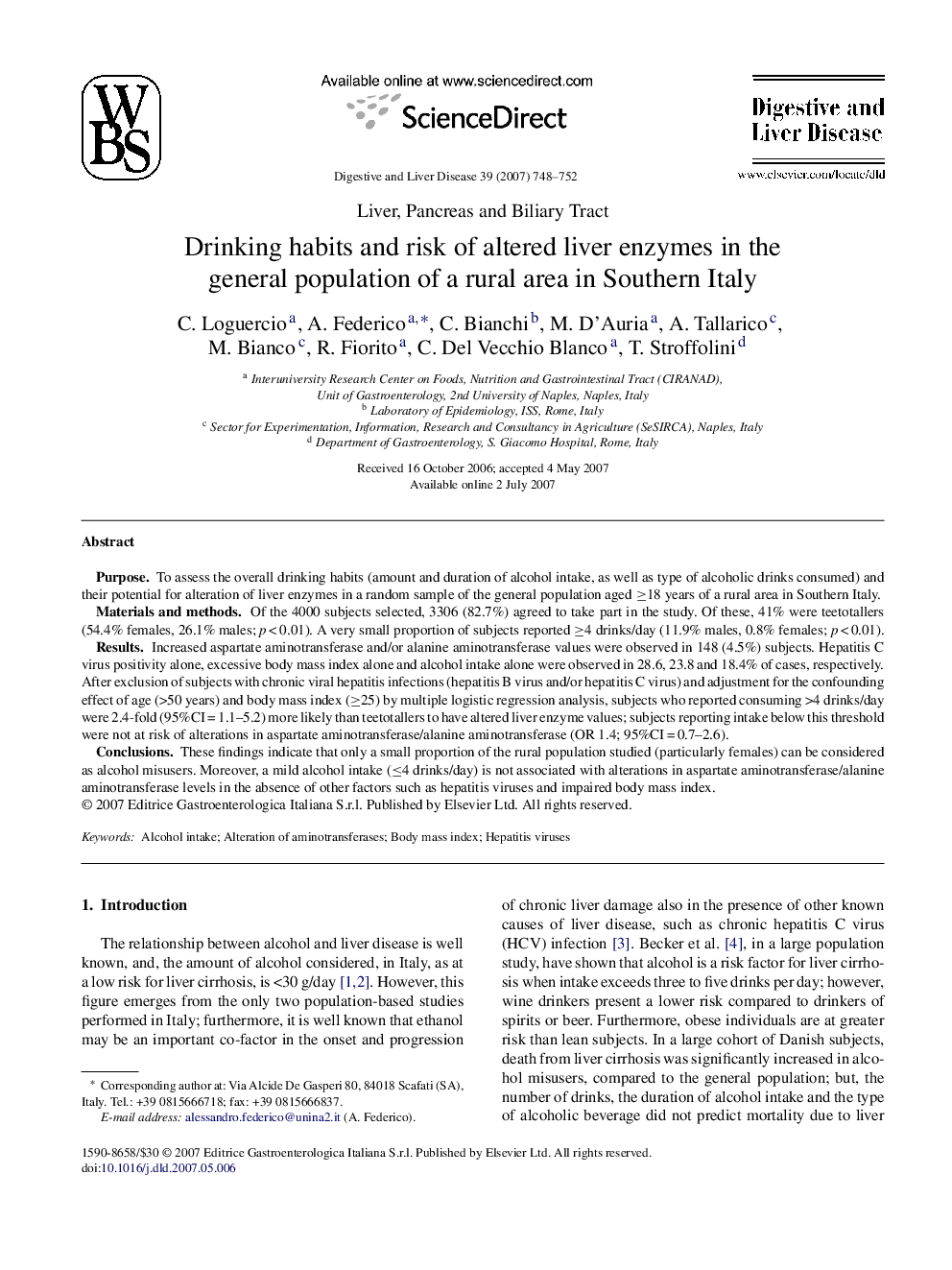| Article ID | Journal | Published Year | Pages | File Type |
|---|---|---|---|---|
| 3266206 | Digestive and Liver Disease | 2007 | 5 Pages |
PurposeTo assess the overall drinking habits (amount and duration of alcohol intake, as well as type of alcoholic drinks consumed) and their potential for alteration of liver enzymes in a random sample of the general population aged ≥18 years of a rural area in Southern Italy.Materials and methodsOf the 4000 subjects selected, 3306 (82.7%) agreed to take part in the study. Of these, 41% were teetotallers (54.4% females, 26.1% males; p < 0.01). A very small proportion of subjects reported ≥4 drinks/day (11.9% males, 0.8% females; p < 0.01).ResultsIncreased aspartate aminotransferase and/or alanine aminotransferase values were observed in 148 (4.5%) subjects. Hepatitis C virus positivity alone, excessive body mass index alone and alcohol intake alone were observed in 28.6, 23.8 and 18.4% of cases, respectively. After exclusion of subjects with chronic viral hepatitis infections (hepatitis B virus and/or hepatitis C virus) and adjustment for the confounding effect of age (>50 years) and body mass index (≥25) by multiple logistic regression analysis, subjects who reported consuming >4 drinks/day were 2.4-fold (95%CI = 1.1–5.2) more likely than teetotallers to have altered liver enzyme values; subjects reporting intake below this threshold were not at risk of alterations in aspartate aminotransferase/alanine aminotransferase (OR 1.4; 95%CI = 0.7–2.6).ConclusionsThese findings indicate that only a small proportion of the rural population studied (particularly females) can be considered as alcohol misusers. Moreover, a mild alcohol intake (≤4 drinks/day) is not associated with alterations in aspartate aminotransferase/alanine aminotransferase levels in the absence of other factors such as hepatitis viruses and impaired body mass index.
